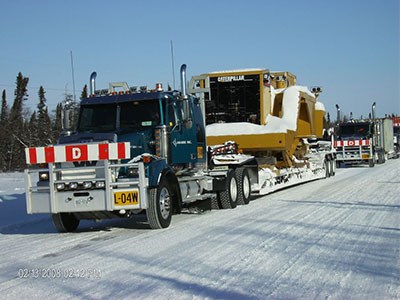The province is about a year away from rolling out a multi-modal transportation strategy for the North.
Since 2011, the Ministry of Transportation (MTO) has been studying how people and freight move across the region and have been regularly meeting with regional stakeholders to gather their feedback on how to plan and improve transportation infrastructure over the next 25 years.
Tija Dirks, the MTO’s director of transportation planning, estimates a final report will be presented to premier and cabinet by January, 2017.
The strategy is tied to the government’s Growth Plan for Northern Ontario. Once revealed it will provide short, medium and long-term solutions to improve the region’s transportation systems for road, rail, marine, air and other modes.
On the information-gathering and fact-finding side, Dirks said they are about 80 per cent done. On the report-writing side, it’s about 25 per cent. “It’s starting to begin to come together.”
The original timelines were to release the draft plan this winter, but a provincial election — with a new transportation minister appointed — and periodic check-ins with government for direction have pushed the timelines out another 12 months.
The MTO hired consultants beginning in 2012 to conduct interviews with stakeholders in the mining, forestry, manufacturing, agriculture and tourism sectors, with input from First Nation, Métis and municipal leadership, on their future transportation needs.
Dirks said that conversation is continuing through various technical committees so as to build consensus on the direction that the North’s transportation system needs to go and identify the priority projects based on various economic scenarios.
In November, ministry staff met with Aboriginal and Métis groups in Kenora, Sioux Lookout, Thunder Bay, Timmins and Sudbury.
The back-and-forth also continued between mayors, ministry staff and Northern Development and Mines Minister Michael Gravelle at the Northern Leaders forum in Thunder Bay in early November.
Come January, the MTO is convening a technical advisory committee of 100-plus public and private stakeholders.
In the final document, Dirks said there will be a list of recommendations on those needs with a range of high, medium and low priorities, “so that we are building a more flexible and resilient network.”
To devise a strategy, Dirks said it was important to fill in some critical information gaps.
For instance, little is known about traffic volumes on the winter road network since the MTO doesn’t perform traditional counts on these seasonal routes. This winter, electro-magnetic counters will be placed in the snow to gather previously unknown data how many vehicles utilize them.
The ministry has also embarked on a mapping exercise of First Nations access roads.
“It’s really interesting because I had not even realized how sparse the knowledge is about those roads that tend to connect First Nation reserves to the provincial highway networks,” said Dirks.
“Some are municipally or provincially owned, and it’s not often clear who is responsible for maintaining them. We’re doing some actual field work to understand that part of the network.”
“That’s a missing piece of the network puzzle for the First Nation communities that we’re filling in.”
Early on in the process, they conducted a survey of commercial and residential vehicles to get a feel of how the region’s supply chain works and people’s place of origin and destination.
To keep Northerners apprised of their process, the ministry went live with a website in September (NOMTS.ca) where working papers will be posted every month.
Two papers will be posted by the new year, with an assessment on the impact of climate change on the transportation system, including what the melting permafrost means for the winter road network, and population and employment forecasts out to 2041, used for modelling purposes to understand highway capacity and potential bottlenecks.
Some of the feedback the ministry has received resulted in some actionable items.
For instance, the government announced in November applications were being taken for the new Connecting Links program, offering $15 million a year to 77 eligible communities for help to fix roads and repairs that connect to major provincial highways. Dirks said that was the direct result of comments from municipalities, including quite a few from the North.
Cutbacks in intercity bus service by road carriers like Greyhound have been a prominent issue on the minds of many Northern leaders. The ministry now intends to review and modernize their rules and regulations governing these operations to improve service to many rural communities.
Extending infrastructure into the Far North to reach the mineral deposits in the Ring of Fire will be included in the strategy.
Dirks said her ministry is working closely with the Ministry of Northern Development and Mines in supporting the Ring of Fire project.
“The actual decision on how to proceed to support the actual mineral development will probably happen on its own track, but where this broader Northern strategy can help is making sure all this other secondary and tertiary supports and rest of network works to support that.”
With the contacts made and relationships built through the advisory committees, Dirks is hoping this beneficial exercise could take on more of a permanent nature.
“We’ve been talking about how some of the partnerships and organizational structures that have come together through this process could really help in the implementation. We’ve made some valuable connections and we don’t intend to lose those.
“Some kind of Northern transportation forum would be a really interesting idea to keep it going.”




